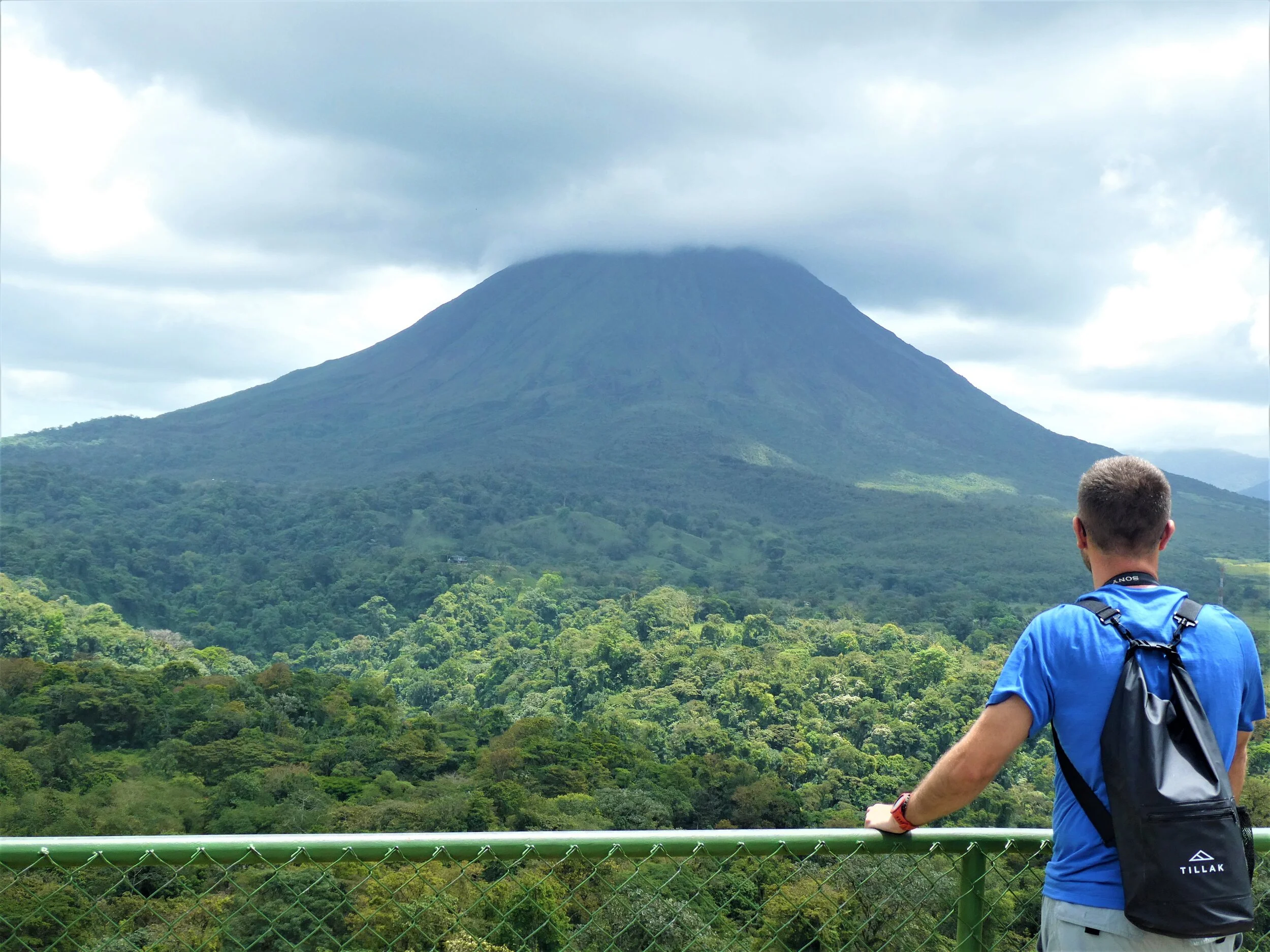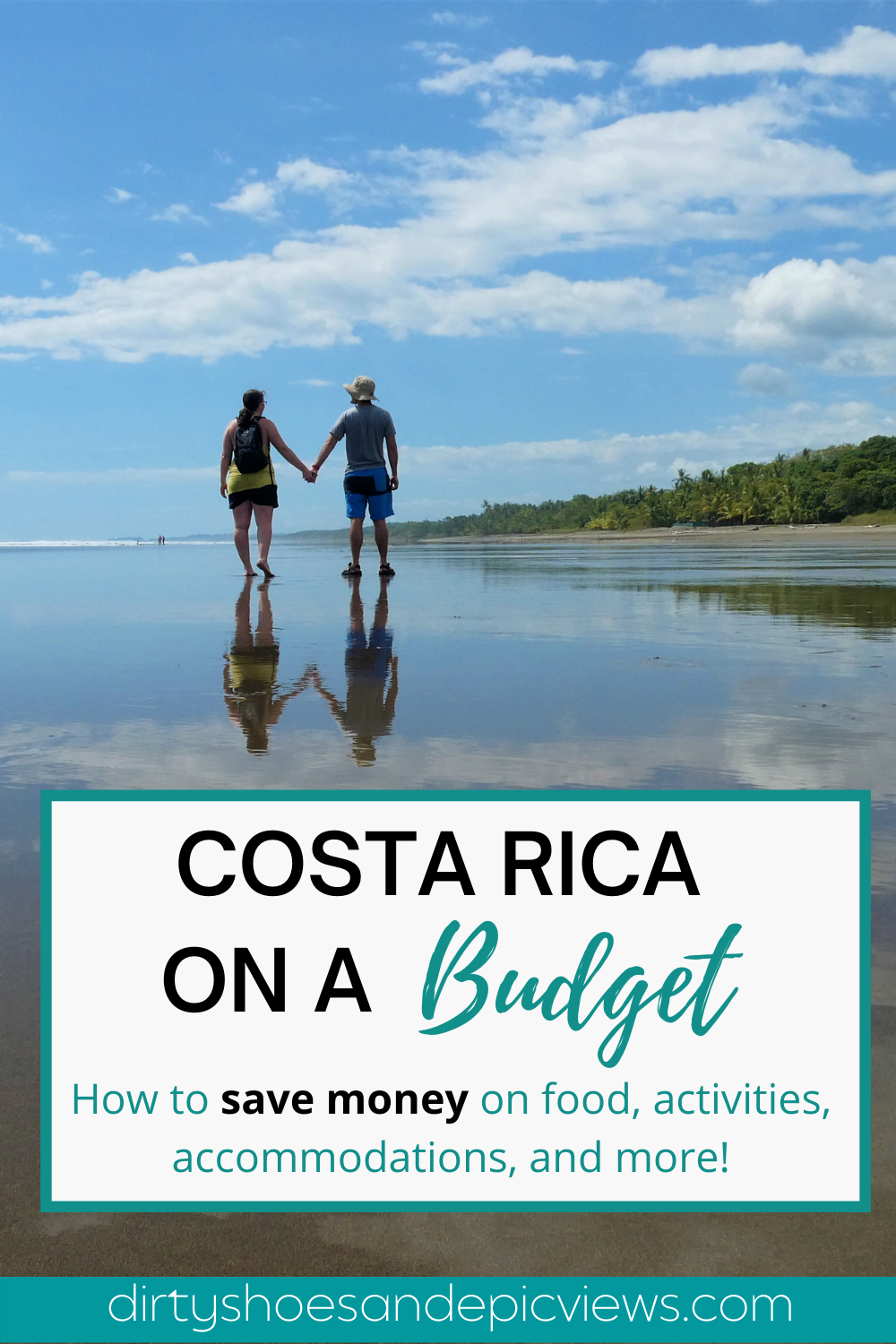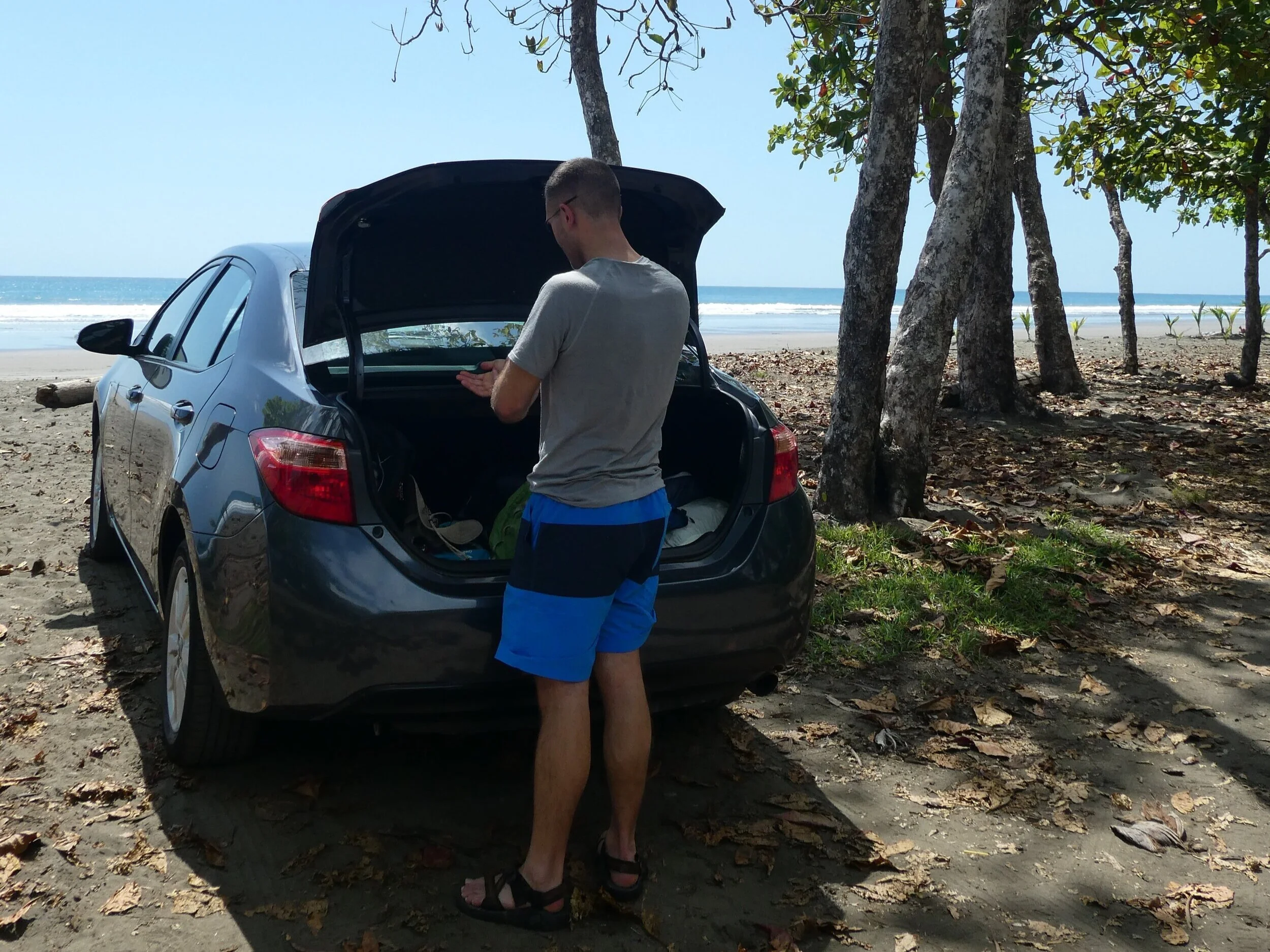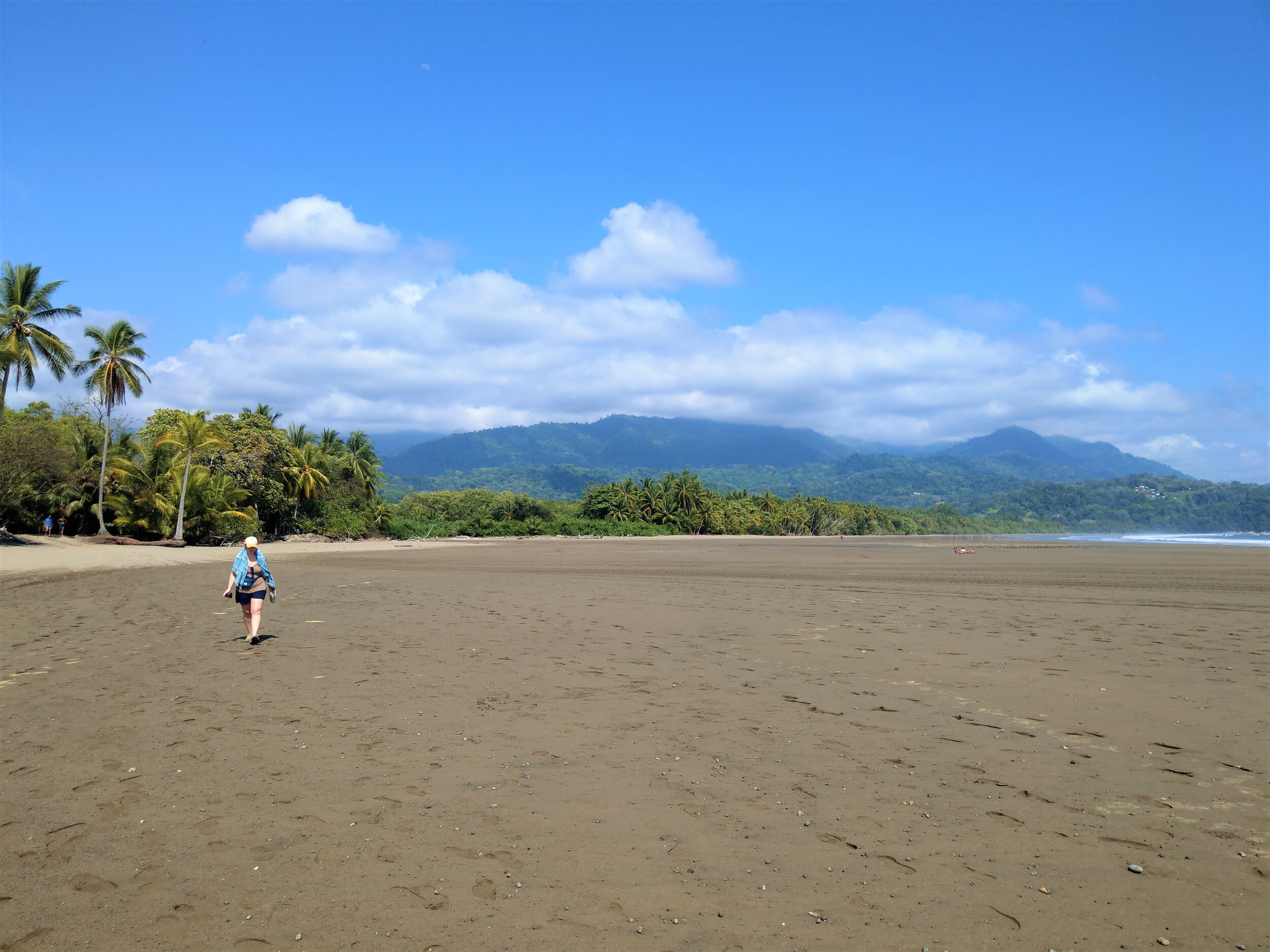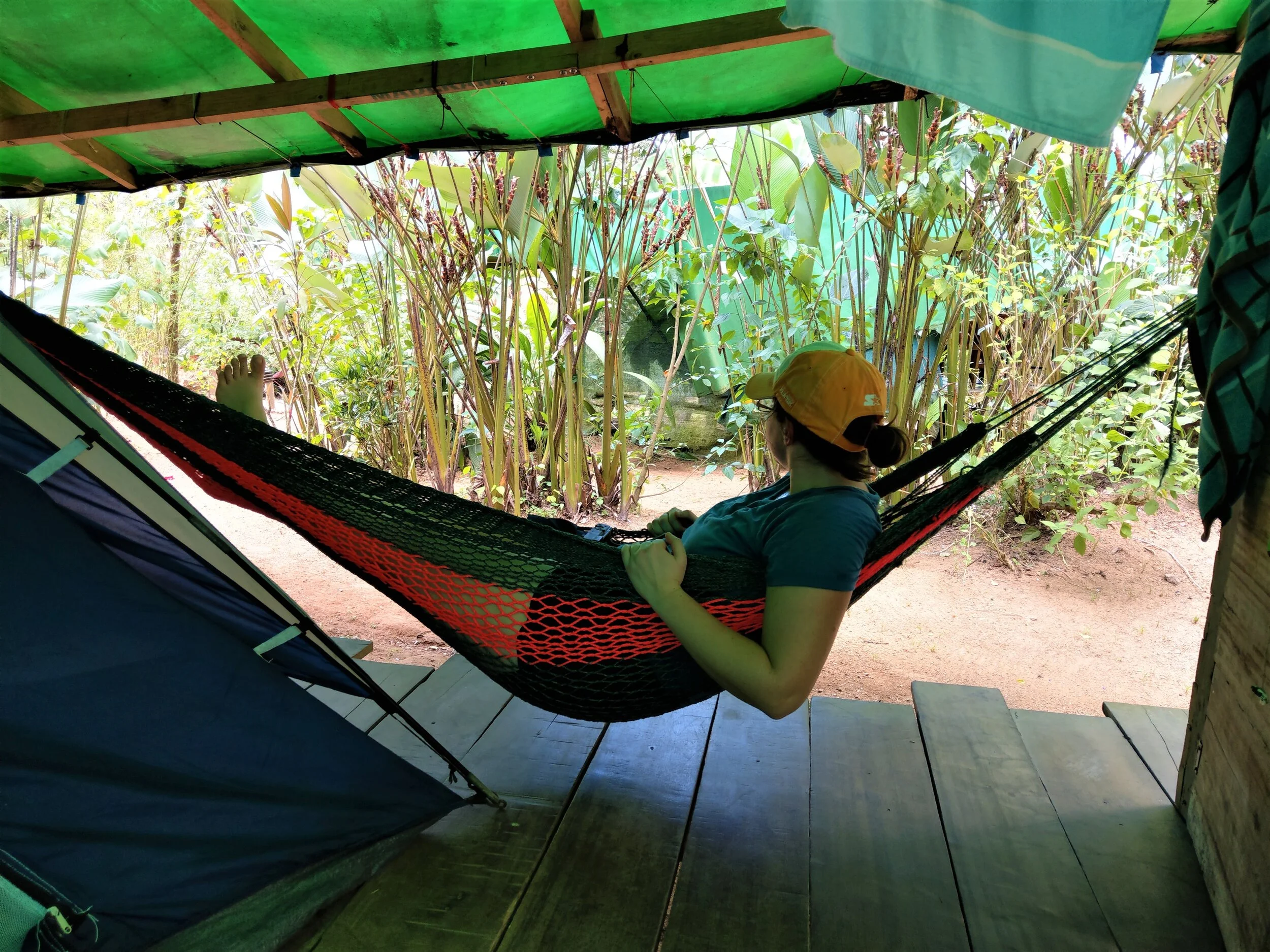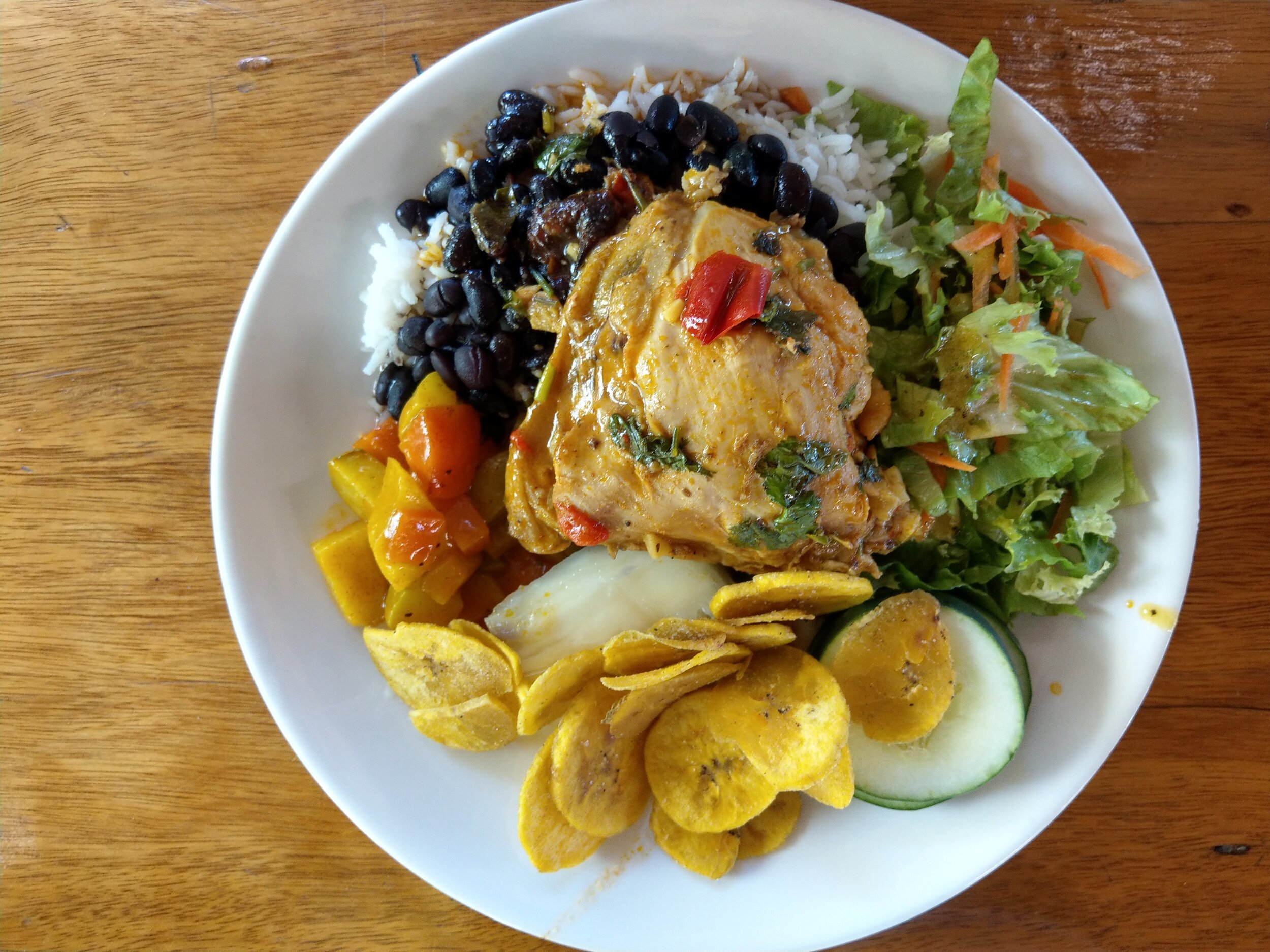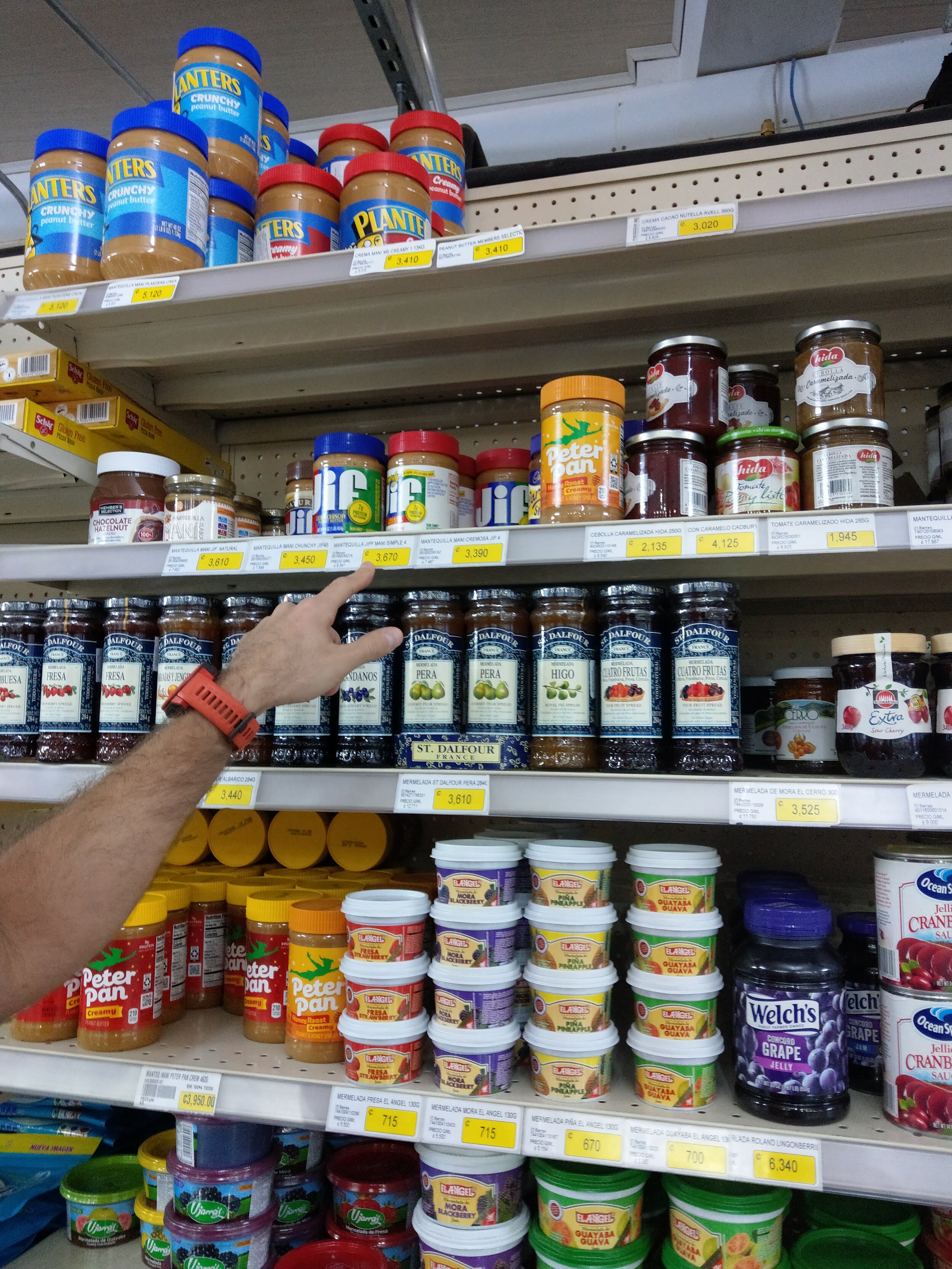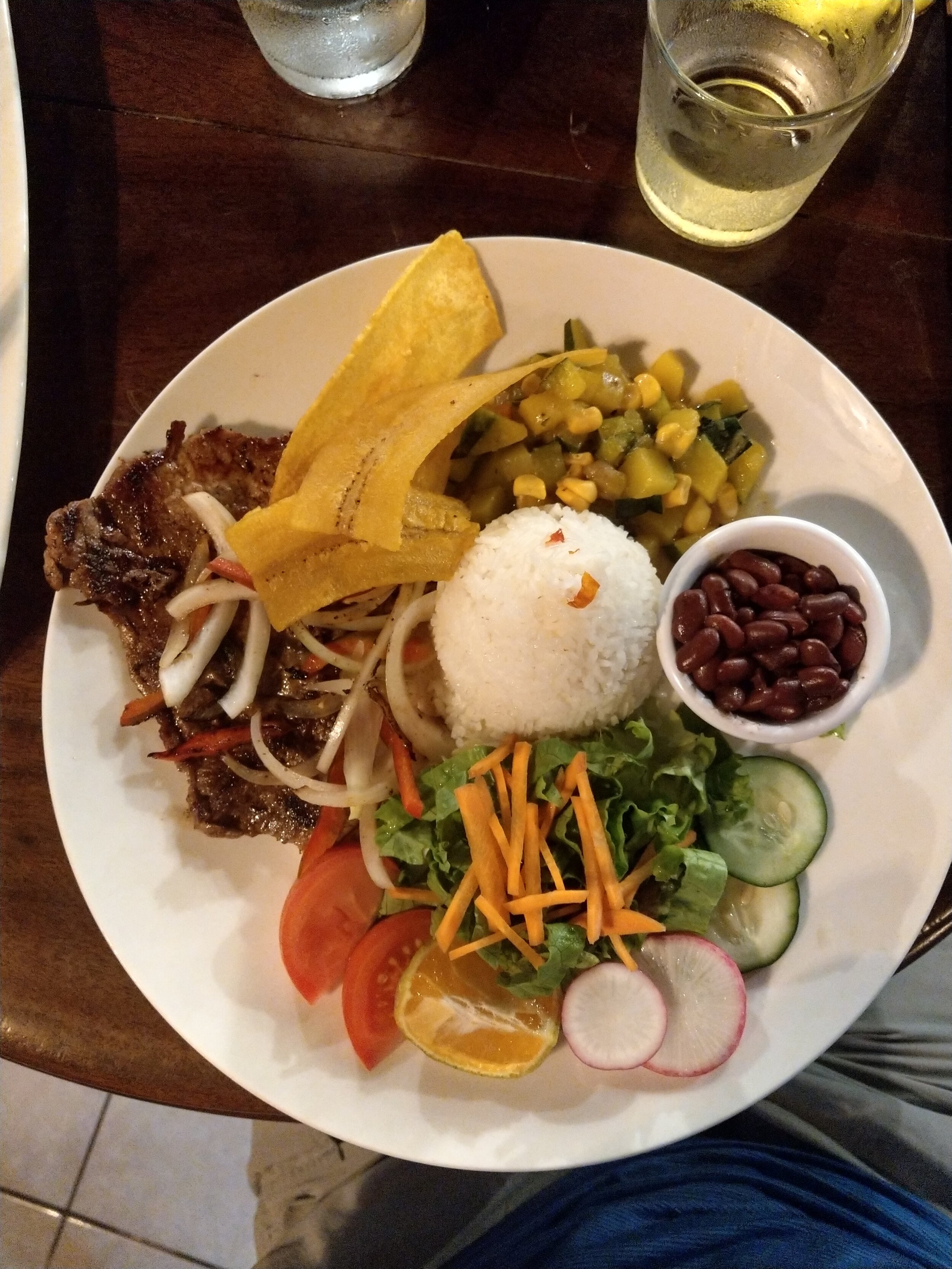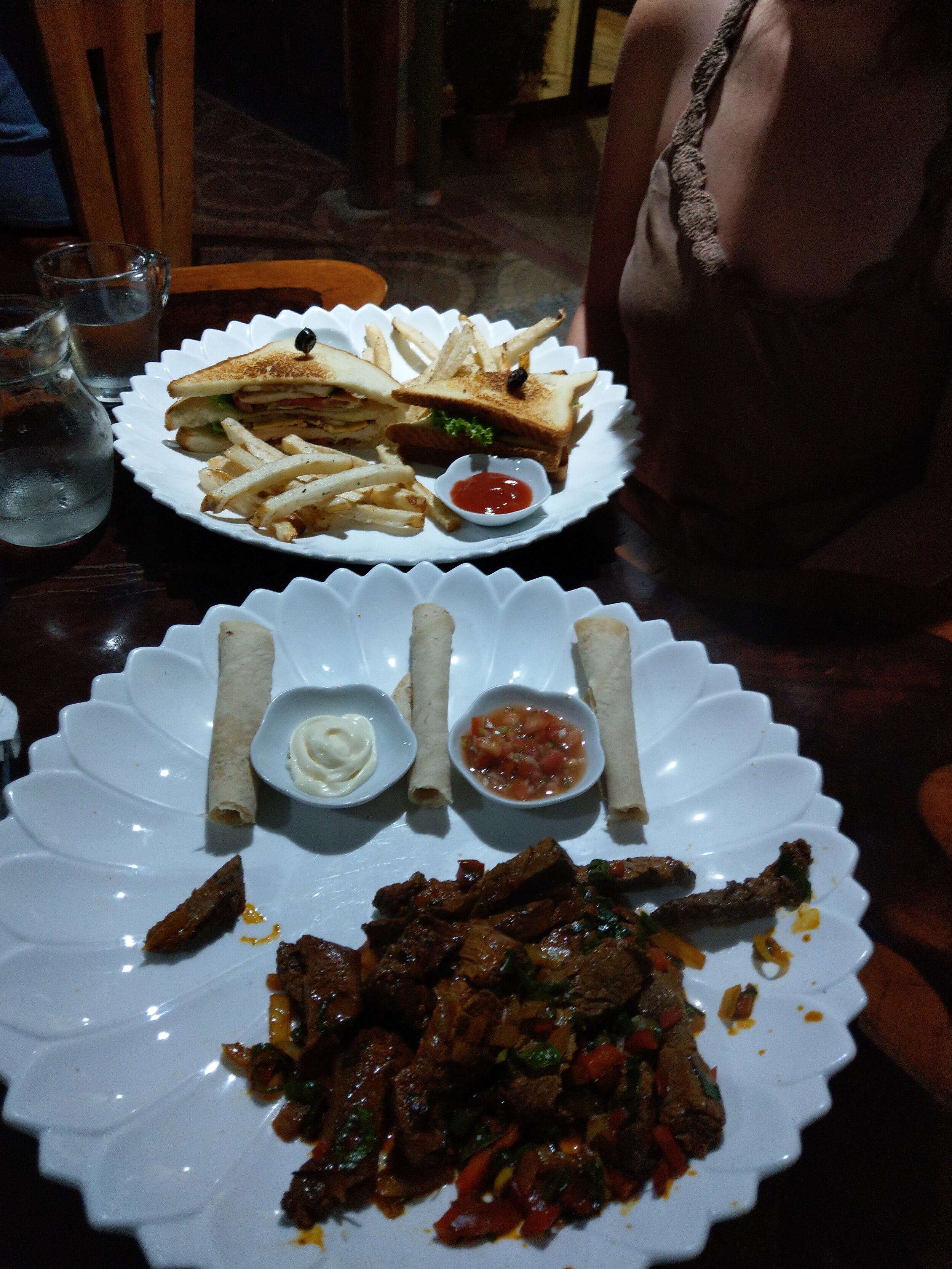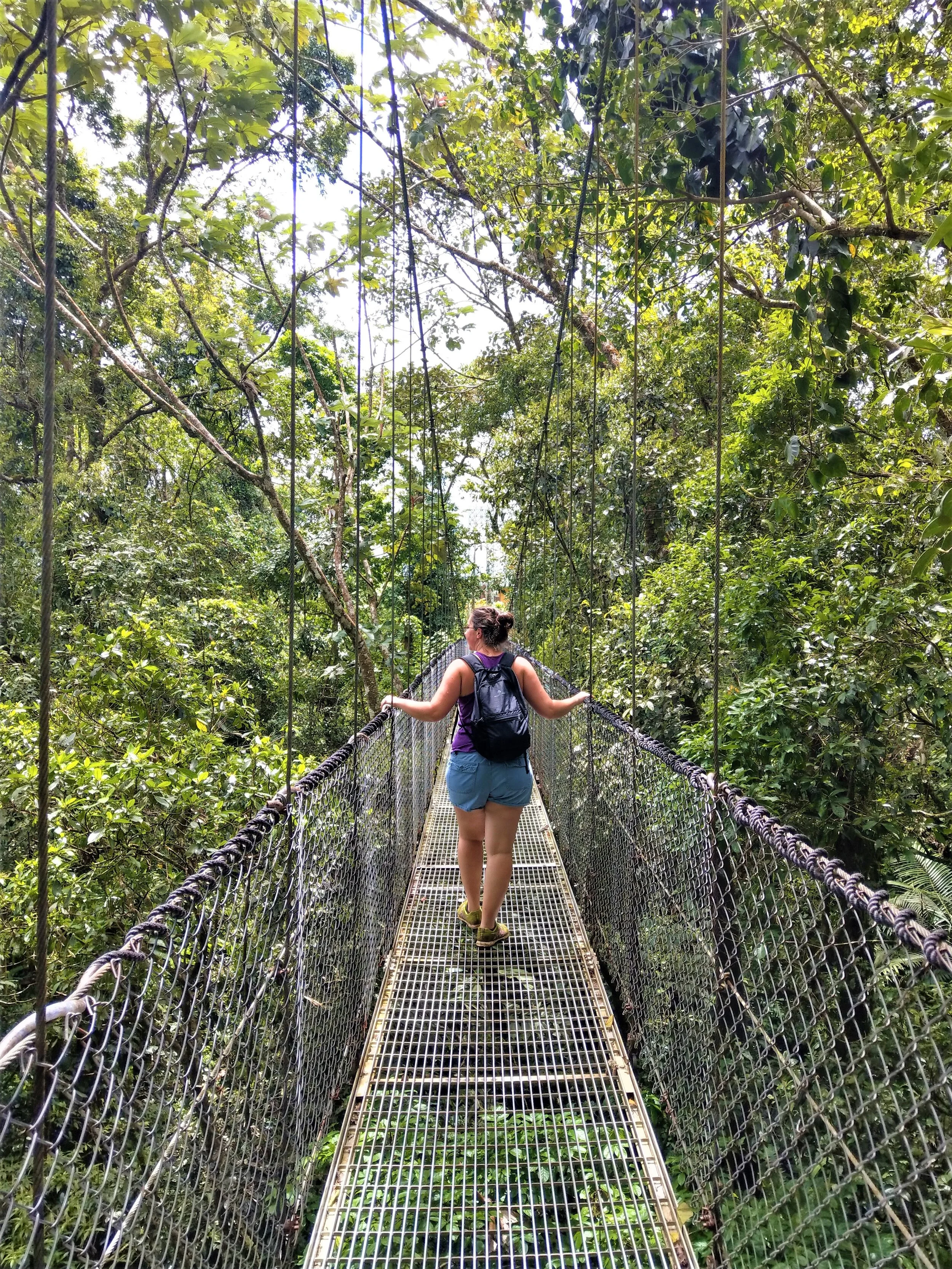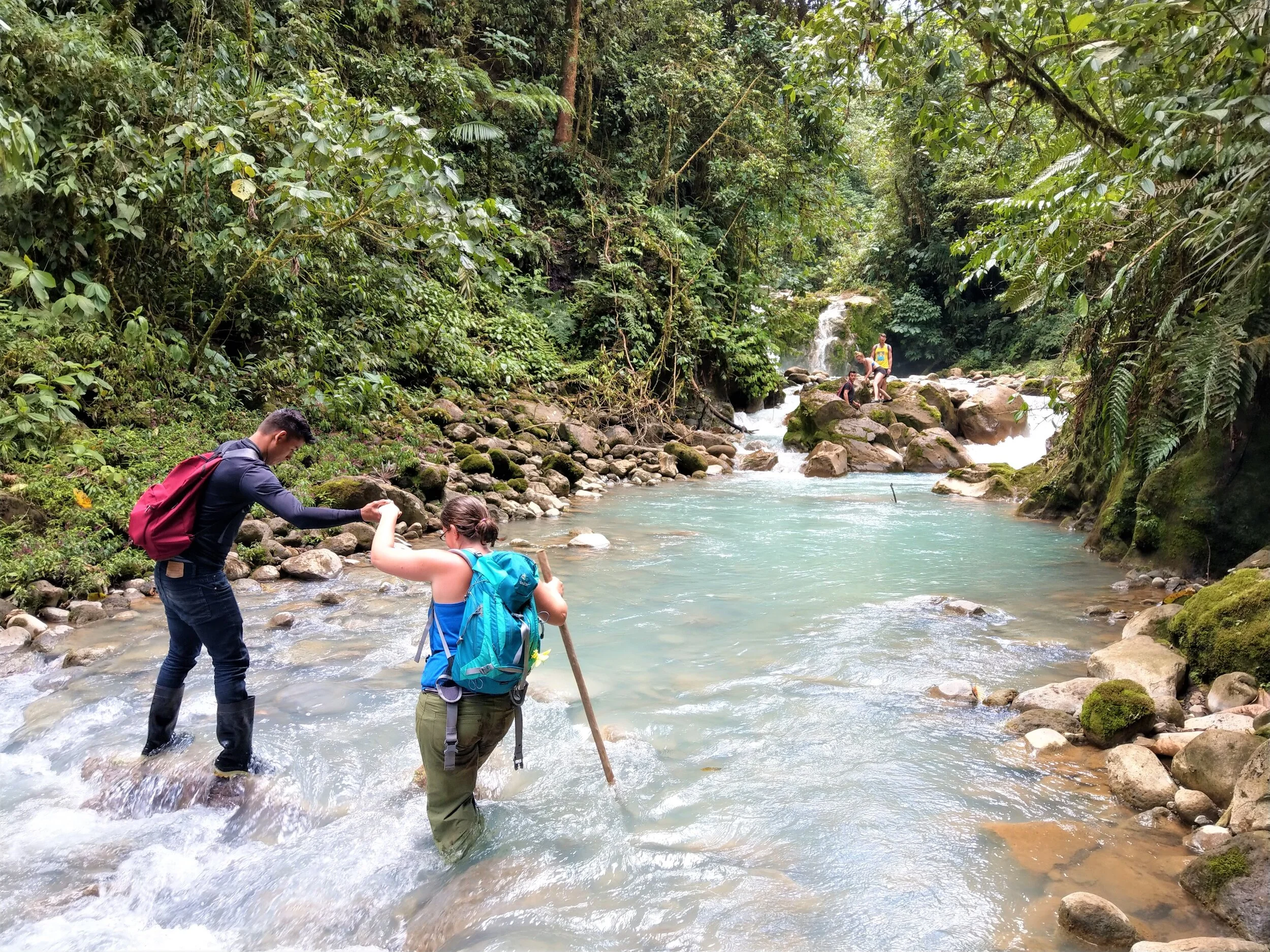Travel to Costa Rica on a Budget: Tips for Saving Money
You’ve seen all the pictures of its pristine tropical beaches, lush rainforests filled with exotic animals, epic volcanoes rising out of the countryside… you’re two seconds away from pressing “Buy” on those plane tickets, but there’s just one question lurking in the back of your mind. How much will a trip to Costa Rica cost?
It’s no secret that Costa Rica can be expensive. In fact, it’s been named the most expensive country in Central America. But don’t let this title scare you away from your dream trip…because we’re here to tell you that you can certainly travel to Costa Rica on a budget! We spent ten days in this amazing country, and we can speak from experience that it doesn’t have to break the bank.
In this post, we’ll give you an idea of how much you can expect to spend if you’re travelling to Costa Rica on a budget. Along the way, we’ll give you our best tips for saving money in Costa Rica on things like accommodation, transportation, and food. At the end, we’ll give you our complete budget breakdown in each category so that you can start to budget and plan for your dream Costa Rica getaway!
Article Contents
Cost of transportation in Costa Rica
Cost of accommodations in Costa Rica
Cost of food in Costa Rica
Cost of activities in Costa Rica
When to travel to Costa Rica
Tips for saving money in Costa Rica (skip here to get a summary of all our best tips!)
Our Costa Rica budget breakdown
Want to save this article for later? Pin it and come back any time!
Cost of Transportation in Costa Rica and Tips for Saving Money
With all the awesome places to go in Costa Rica, chances are you’re going to try to hit a few of them in one trip, and we don’t blame ya! But that just means you’re going to have to think about how to get from place to place. Transportation in Costa Rica can range from dirt cheap to hard on the wallet, depending on your budget and preferences.
Three are three main ways to travel around Costa Rica:
Take the public bus. Taking Costa Rica’s public buses are for sure the way to get around if you’re on a tight budget. They are super cheap (we’re talking $5 for a four- hour ride or even longer). The lower price tag does come with its separate costs, though:
Public buses may double your time to get to your destination. They’re slow going and make lots of stops along the way.
You have to deal with figuring out where and how to get to bus stations and pay for your tickets. And we’ve heard from fellow travelers that that the buses aren’t always the most dependable for being timely.
We’ve also heard they aren’t the most comfortable for those longer rides – expect crammed and hot conditions.
You might have to make one or more connections to get from Point A to Point B because there aren’t too many direct routes, especially if you’re trying to get to less touristy destinations.
You can’t make your own schedule or go to off the beaten path locations (at least easily).
Take home: If time is on your side, you don’t mind these minor inconveniences, and you want to really save money in Costa Rica, then buses are the way to go.
Arrange private transport. This is expensive, though. We estimated it was about $10 or more per hour of travel. So, if you plan on moving around a lot, then this method of transportation can really add up. Major places like La Fortuna, Monteverde, and Quepos are all hours apart. It is convenient, though, because you don’t have to deal with driving yourself.
Another reason it’s ok to not have your own car is because a lot of tours, guided trips, and popular places may include an option for transportation or private pick-up, usually at an extra cost, of course. For example, Manuel Antonio National Park offers group or private transfers from pretty much wherever you are.
Take home: If your budget isn’t limited or you don’t plan on traveling too far around the country and if you don’t want to deal with the hassle of driving in a foreign country, this is a great option.
Rent your own car. We think renting a car in Costa Rica is the best way to get around. Why? Let us count the ways! It’s convenient, and allows for more flexibility, less hassle, and more opportunities to get off the beaten path…aaaand it’s cheaper than you might think. Sure, it’s way more than taking the public bus, but we think the added cost is worth it in this case, and if you’re traveling with other people, it’s an expense that can be easily split.
So, let’s talk a little bit more about renting a car and driving in Costa Rica…
Renting a car in Costa Rica
Renting a car is fairly straightforward in Costa Rica…if you have a valid license and passport, you’re good to go. Here are just a few things to consider when renting a car and traveling to Costa Rica on a budget.
Reviews – There are tons of companies, both local and international. It’s always good to comparison shop not only for price but for reviews and customer service. Do customers seem to complain about getting nickeled and dimed? I know we have run into a few companies in different places that seemed to have consistently negative reviews, so we passed despite their initially attractive low prices.
Insurance- Rental cars in Costa Rica actually have a mandatory (by law) insurance called Primary Liability Insurance (PLI). You cannot decline this. Although we did not experience this ourselves, we have read that people decline this insurance when booking online only to arrive in Costa Rica to find that they owe hundreds more than they originally thought because they can’t really decline this insurance. You can decline the other standard insurances if your credit card or something else covers it.
Location – Make sure the rental place in near the airport and that they offer complimentary shuttles.
Time of day – Many flights into Costa Rica get in later. You also have to factor in a long time in customs. It notoriously takes a while in Costa Rica because it seems as if all the flight comes in at once! We were there for a few hours. Make sure when you are selecting your pick- up time, you choose the appropriate time (later in the day) which might save you some money, or consider staying at hotel near the airport for one night and picking up the car in the morning, which can save you a whole day’s worth of a rental.
What type of car do you need? Many people think that they need a 4x4 to drive around Costa Rica. And while it’s true that there are definitely parts where a 4x4 is needed, this is not always the case. We got around just fine in our regular 2- wheel drive sedan. We drove along most of the Pacific coast, from Sierpe all the way up to La Fortuna, and had no issues. There was just one time, during our visit to Nauyaca Falls near Uvita, that a 4x4 would have come in handy to get to the trailhead, but instead, we parked our car at a further lot and walked the extra distance. Worth it in our opinion to save a bunch of money by not renting a 4x4. There were some dirt roads in Uvita, but they were navigable with our car. Of course, places like Monteverde and the Osa Peninsula do require 4x4 capabilities. So do your research and know what you need.
Offline maps – Download the offline Google Maps for the country so that you can forego an expensive GPS or wireless connection in your rental car.
Take pictures – When you pick up your rental, you’ll do an inspection of the car with your rental agent. Don’t be passive in this. Make sure you take note of every ding, dent, and scratch, and feel free to take pictures. While this doesn’t seem to be too much of an issue in Costa Rica, we’ve read enough in our travels to know that it’s definitely better to be safe than sorry.
When you rent a car in Costa Rica, the rental cost isn’t the only expense you need to think about.
Gas: Gas is pretty expensive in Costa Rica, about 600 colones per liter, which is roughly $4 USD per gallon. Our car got 14km/L on average (about 33 mpg), so this is another way a smaller sedan might help you save some money over a larger 4x4 vehicle. The obvious way to cut costs on gas is to not drive so much. Don’t stay in totally off the beaten path accommodations that are far from major towns and attractions that you are interested in visiting, and try arranging your itinerary to avoid any backtracking.
Tolls: If you take highway 27 out of San Jose, you are going to pass through a series of tolls, none of which was more than 760 colones (about $1.30), but you have to pay in cash (USD or colones).
Cost of Accommodations in Costa Rica and Tips for Saving Money
In Costa Rica, the price tags of accommodations span the entire gamut, from $30 a night to $300 a night and more.
As always, it depends on your budget and the comfort and style you are looking for. For example, in La Fortuna, you can stay at the famous Tabacon Thermal Resort and Spa for over $300 per night. With that price tag comes perfectly picturesque hotsprings, spa services, and swim up pool bars. The Los Lagos Hotel and Resort is mid-range, at about $150 per night, offering a pool and hiking trails on the property with views of Arenal. And then there are hostels and air-bnb like rooms for as low as $20 a night, without many frills but hey, if all you’re looking for is a place to sleep at night, then why not?
During our time in Costa Rica, we set an arbitrary limit of $40 per night on budget accommodations, and we had no issue sticking to it (the places we stayed at ranged from $20-$45 a night, with an average of $32 a night for our whole trip).
We used booking.com to browse through the huge variety of options available. We looked for for budget accommodations in Costa Rica such as airbnbs and hostels with private rooms, with a mix of shared and private bathrooms, and we really have no complaints about anywhere we stayed, which is to say that you can definitely find decent lodging for a low budget in Costa Rica. We really just needed a place to sleep at night, since we planned out being out and about each day, so we felt like we didn’t need to pay more for extra frills that we wouldn’t fully utilize.
Some things to consider, in addition to price, when looking for accommodations in Costa Rica on a budget:
Style – Are you looking for a more authentic eco experience, with open air rooms in a rainforest setting and an opportunity to have wildlife outside your front door? Or are you looking for more of an urban downtown feel in the midst of the hustle and bustle? There’s something for every style of travel in Costa Rica, that’s for sure.
Type of room/privacy – When you’re looking at the lower-budget accommodations, particularly hostels, make sure you read the details on whether it’s a shared or private room, or whether you have a shared or private bathroom. There are several different styles of rooms within each place and at different prices. Of course, if you’re willing to share, it will be cheaper.
Inclusions – Many places offer free or discounted meals (particularly breakfast) which can help save some money. Some places may also work with local tour companies to get discounts for their guests. In La Fortuna, we scored an awesome deal through our hosts for a white- water rafting trip!
Location - This is particularly important if you don’t have your own mode of transportation, or if you’re looking for something a little quieter and off the beaten path. For example, in La Fortuna, some places might be located on the far side of the lake a long way from the main attractions of the area. However, these places are quieter and more rustic. If this is what you are looking for, make sure you know how long the drive or transportation can be arranged by either guides or your accommodation.
Also make sure to check the kinds of roads it will take to get to your lodging. For example, in Uvita, most of the roads off the main route become dirt. Some go up into the mountainside and absolutely require a 4x4. If you only rented a 2WD car, any accommodations in these areas are obviously a no-go for you.
Reviews – Definitely check the reviews to get an idea of what people like, and more importantly, don’t like, about a place. For example, we read reviews for one place in particular where a lot of people mentioned that the rooms were above a bar and that loud music kept them up all night. Hard pass! We would have had no idea that was the case without reading these reviews.
Air conditioning – A lot of the budget options won’t have this. In fact, we didn’t have air conditioning in any of our stays. Most rooms will have fans, though. So, if you’re looking to save money in Costa Rica on accommodations, expect to forego this convenience. It wasn’t as bad as we were expecting!
Warm water – Some budget places have it, some don’t. It’s kind of hit or miss and we had warm water about 50% of the time. It’s a nice convenience when you have it, but it wasn’t too terrible to not have it either. It’s so hot in Costa Rica that a cold shower was kind of refreshing!
Tax – Some prices have the 13% VAT tax included and some don’t. Always make sure you’re comparing prices with tax included!
Cost of Food in Costa Rica and Tips for Saving Money
No matter what your budget is in Costa Rica, ya gotta eat! But luckily there are ways to cut down the cost of food, too.
Normally, we would say that grocery shopping and cooking your own food is the best way to save a lot of money on food when traveling, but in Costa Rica, that actually wasn’t necessarily the case! Groceries were surprisingly expensive in Costa Rica, and eating out was surprisingly cheap! And let me tell you, the local food was absolutely delicious.
Let’s go through each option in a bit more detail…
Buying groceries in Costa Rica
As we said above, groceries were surprisingly expensive and kind of threw us for a loop. This was, in part, due to the 13% VAT tax on groceries. We arrived to Costa Rica thinking we could just do our usual PB&J sandwiches every day for lunch, but nope…that stuff is expensive!
There are quite a few different grocery stores in Costa Rica, some more expensive than others.
Pali and Maxi Pali are generally more basic, small, don’t have too many options, sell primarily local brands, and are on the cheaper end of the spectrum.
Mega Super and B&M are bigger with more options and are pricier. Some places only have one or the other, so you might not have much of a choice (we just shopped wherever was closest to us so we didn’t spend too much time shopping and not out adventuring!).
You can also go to local pulperias, which are basically small convenience stores to get basic groceries, and cheap snacks and drinks.
In the bigger grocery stores especially, you can find foreign brands, but they are super expensive. In addition to the 13% tax, there is also an import tax. Try to stick with local brands to save money on food in Costa Rica. Check out the prices below of the PB&J…the Welch’s brand of jelly is almost 6x more expensive than the Costa Rican brand!
Eating out in Costa Rica
You’ll be happy to know that eating out in restaurants in Costa Rica doesn’t have to break the bank! Even in Drake Bay, a touristy place where food has to be boated in, dinner for two people with beer was only about $18 USD. Most places included the 13% tax in the listed menu prices. When you get the bill, also expect there to be a 10% service fee, which is kind of like an included tip. It’s not necessary to tip beyond that unless you had really exceptional service. That said, even with this additional 23% in extra tax/tip, our bill for two was still $18. Not too bad!
To find cheaper meals in Costa Rica, go to small places that serve local food. Sodas are small local restaurants serving cheap local meals. We highly recommend trying a casado – a typical dish with meat, rice, black beans, plantains, and a salad. It’s a ton of food (enough even to split), cheap, and absolutely delicious. I could have eaten those every day and am still dreaming of them (and that’s saying something from someone who’s a picky eater and often doesn’t try new things!).
Other tips for saving money on food in Costa Rica:
If you plan on checking a bag on the plane, consider packing some small food items and snacks in there to save some money on groceries when in Costa Rica. Oatmeal, bars, rice, etc can be easily packed in a suitcase. This also includes toiletries – make sure you bring everything you need and enough for the entire time you’re in Costa Rica so you don’t have to drop a lot of money on these things when you’re there and pay way more than you would have paid at home.
Consider taking advantage of lodging with free breakfasts or discounted meals at their in-house restaurant. At one of our stays, we got a giant Casado for dinner for about $4USD which was enough for a meal for 2. We also got a couple of free breakfasts…they’re nothing fancy, usually consisting of just a bowl of cereal and a plate of fresh fruit, but it’s free and enough to get you through the morning!
If you are going to parks, pack food with you. For example, the café in Manuel Antonio has really expensive food. You can save yourself a good chunk of change by packing your food in…just make sure to read the rules and regulations in advance to know what food is and is not allowed.
A simple…but free…breakfast at one of our hostels
Cost of Activities in Costa Rica and Tips for Saving Money
To be honest, this is probably where most of your budget is going to go in Costa Rica.
Usually we don’t spend too much money on paid activities when we travel, but we purposely trimmed our budget in Costa Rica as much as we could everywhere else so that we could do more than usual while here. I mean, we came to Costa Rica for the adventure, and we couldn’t leave without doing a least of few guided activities while we were there!
Basically, everything costs money in Costa Rica. Of course, the guided adventurous activities do, but even simple things that you might not normally expect to cost money, such as hiking. Access to hiking trails usually come with an entrance fee. And even for spots that are free, parking is usually not, as you’ll be paying a parking attendant to watch your car. Remember: always have cash (USD or colones) on you for this purpose.
With all the fun activities to do in Costa Rica, snorkeling, diving, wildlife tours, ziplining, rafting, kayaking, the list goes on… all these costs will really start adding up.
To give you an idea of prices, here are some examples (from when we went in 2020):
Whale watching tours out of Uvita: $75-80+
Snorkeling in Cano Island: $75-$85 (from Drake Bay); $130+ out of Uvita
Corcovado day trip: $95+
Corcovado overnight trip: $285+
Kayaking tours: $70+
Ziplining: $57+
Combo adventure tours (ziplining, canyoneering, etc): $80-130+
Hiking in Arenal National Park: $15
As you can see, these all can quickly add up – add in parking fees, tips, and entrance fees, and we’re talking about a lot of money.
First, we recommend comparison shopping. For the most part, you’ll find very similar prices for the same activity in a particular region of Costa Rica, but it never hurts to do your homework. We saved about $10 per person on our Corcovado trip by extensively searching through all the options. Not a ton, but every penny counts when you’re on a budget, right?
Secondly, I know…it can be a bit overwhelming…who doesn’t want to do all these activities, right?! It can be hard narrowing this list down to your must do’s. We painstakingly narrowed our list of must-do activities down by asking ourselves, “What would be the most unique experience for us in Costa Rica? What haven’t we done before?”. We’ve both been ziplining, we’re both climbers and know the thrill of repelling and canyoneering, we’ve been snorkeling in really cool places… so sadly, as cool as they would be to do again, we scratched those off our list. But, we’ve never been white water tubing before. And we certainly never have been on a hike through a rainforest before in search of exotic wildlife before. We knew that Corcovado was something super unique to Costa Rica, and that was on the top of our list on a trip to Costa Rica.
Another piece of advice we have if you’re traveling to Costa Rica on a budget is: don’t pay for a service or tour of something that you can easily do on your own. Here are some examples:
Places like Manuel Antonio National Park and Mistico Hanging Bridges Park offer guided tours, but you can also explore them on your own for a fraction of the cost of a guided tour. Yes, you’re likely to spot more wildlife with a guide, but ask yourself if that is high on your priority list. If it is, consider choosing just one location for a guided tour, and then do the others on your own. For us, that one place was Corcovado, because a tour guide there is required, and there are super unique animals found there, such as the tapir. After we experienced Corcovado, we felt good about not getting guides for the rest of the parks we visited.
There are several places around La Fortuna where you can pay to hike on trails and get views of the volcano. But in reality, you can see the volcano from almost anywhere in La Fortuna! We didn’t feel the need to pay extra to walk along these trails for similar views.
In La Fortuna, there are tons of thermal spas and hotsprings to take a soak in…and they can get quite pricey. Right outside of town, though, there’s a free natural hotspring along the Tabacon River… same warm water, much different price!
Popular waterfalls like Nauyaca Falls and Rio Celeste offer guided tours. Opt out of these and visit yourself by only paying the cheaper admission fee. They are straightforward to get to on your own.
Instead of snorkeling at Cano Island, snorkel for free at Playa Biesanz in Quepos. We still saw some cool tropical fish!
Another way to save some money is through your lodging…sometimes the host of your lodge/Airbnb may have a relationship with a local guide or organization and can offer discounts to its guests. So look into this! We got a killer deal in La Fortuna…just $42 for a half day of tubing and rafting on white water, transportation, delicious lunch, and a tour of an organic farm. Score!
When to Travel to Costa Rica to Save Money
As with any destination, travelling in the off-season will save you money in Costa Rica.
In Costa Rica, the off season is the rainy season, from May to November, with September and October being the rainiest. Travelling in this season can save you money on tours, flights, accommodations, and car rentals. The exception is the month of July and early August when many people tend to be on their summer vacations.
The dry season, from December to April, is more expensive, especially during the holidays. But there’s a reason more people travel to Costa Rica at this time…you’ll have a better chance of nicer weather, activities like snorkeling are in season, and you can more easily navigate Costa Rica’s roads, especially dirt roads like those leading into Monteverde or the Osa Peninsula.
Travelling in the offseason can have its perks other than lower prices, though. White water rafting is more thrilling in the rainy season due to higher water levels, you can catch the Southern Humpback Whale migration between mid-July to October, and in some regions turtles are nesting or hatching. So if you do decide to travel in Costa Rica’s offseason to save some money, you’re still bound to have an adventure.
Tips for Saving Money in Costa Rica: A Summary
For those of you who want to cut straight to the chase, here is a summary of all of our best money-saving tips in Costa Rica that we just talked about!
Consider taking the public bus.
Consider renting a 2WD car over a 4x4. Do your research to make sure you can get by with one.
If you rent a car, decline any optional insurance that your travel insurance or credit card already covers.
If you rent a car, make sure to download offline maps of Costa Rica rather than purchase wifi/GPS services with your rental.
If you rent a car, take pictures of any damage during inspection – this could save you hassle down the road if anything comes into question.
Consider lower cost hostels and shared rooms or airnbnbs.
Be willing to forego conveniences such as warm water and air conditioning.
Find lodging close to the main attractions you want to visit to avoid excessive travel.
Find places to stay with free breakfast and/or discounted meals.
Avoid buying foreign brands of food.
Shop at local pulperias for basic groceries, snacks and drinks.
Bring some food and all of your toiletries from home.
Eat at local sodas.
Pack food into popular touristy parks.
Anything you can do without a guide, do without a guide.
Choose just one guided activity in a category. For example, there are multiple places you can take a guided wildlife tour. If this is high on your list, choose just one place to go with a guide, and do the rest self-guided.
Stick to activities most unique to Costa Rica.
Check to see if your lodging offers discounted activity rates.
Find the (rare) free activities, like the free hotsprings in La Fortuna.
Travel in the off (rainy season).
Our Complete Costa Rica Budget Breakdown
In addition to helping you find ways to save money in Costa Rica, we wanted to give you our exact breakdown of expenses to give you an idea of what your own budget in Costa Rica might look like to help you could plan accordingly.
Let’s just get straight to it, shall we? Want to know how much we spent over ten days in Costa Rica?
Drum roll please…
Our grand total was $1408.34 USD, or, $704.17 USD per person. Yes, just about $700 per person! Keep in mind that this only includes in country expenses (aka it does not include airfare since that varies considerably for everyone). Also keep in mind that about half of the expenses are converted from what we paid in colones, and that conversion rate changes daily, although it generally sits around 550 colones to $1 USD.
But…not too shabby, right? See, Costa Rica is totally doable on a budget!
Let’s break it down a bit more… Here are our total costs by category. Keep in mind that all of these totals are for two people splitting the cost.
Total transportation costs: $446.94 (32% of our total expenses)
This breaks down into:
Car rental: $275.81 (roughly $28 USD per day)
Gas: $74.48 (with an average of 33mpg)
Tolls: $3.04
Parking: $23.61
Public boat (to and from Drake Bay): $70
Total accommodation costs: $291.24 (21% of our total expenses)
Our nightly rates ranged from $20 to $45 USD, with an average of $32.36 per night.
Total food costs: $122.08 (9% of our total expenses)
This breakdown includes:
Groceries: $85.43
Restaurants meals: $36.65
Total activities costs: $548.08 (38% of our total budget)
This was our biggest expense by far! Unusual for us in general, but in Costa Rica, it’s all about the adventure!
This cost breaks down into:
Guided tours + tips: $389
Entry fees: $159.08
We managed to keep our costs down by saving money using the tips we shared here! Can you do it more cheaply? Absolutely! You can rely more on the public bus, do a few less guided tours, and stay in cheaper dorm-style hostels. But for the style of travel we were looking for, we think we did a pretty good job at keeping our costs low.
Let us know if you have any questions about how to travel to Costa Rica on a budget, we would love help you save money in Costa Rica! If you’ve been before, share your money-saving tips below!
